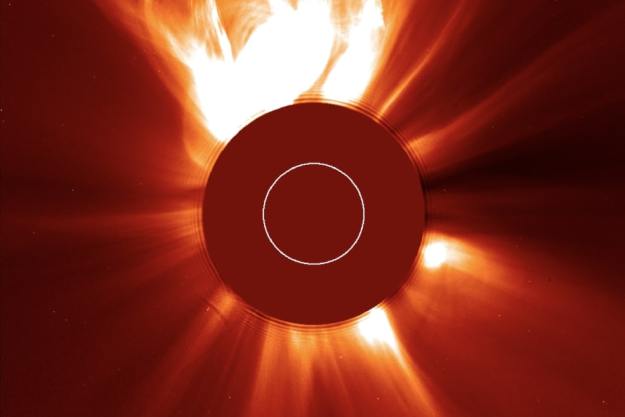
Luckily, Tilley was.
Tilley was on a hunt for Zuma, the secret Air Force spy satellite that was launched aboard a SpaceX Falcon 9 rocket on January 7, but failed to achieve orbit. No one knew what Zuma was or what its mission was, but initial reports suggest that the Falcon 9 had no part in the mission failure, and it may have been due to the uncoupling procedure designed by Northrop Grumman, which built the satellite.
In any case, Zuma supposedly met with a fiery death on reentry. Or did it?
While searching for any evidence of the classified satellite in orbit, Tilley ran across some unusual transmissions. Subsequent observations indicated that they were likely coming from a 17-year-old NASA satellite called IMAGE (Imager for Magnetopause-to-Aurora Global Exploration), which was launched on a Delta-II rocket in 2000 to map the Earth’s magnetosphere. IMAGE used a variety of sensors, including neutral atom, ultraviolet, and radio imaging to observe plasma in the upper magnetosphere.
After years of successful operation, IMAGE ceased responding in 2005, possibly due to a power failure in the transponder controller. However, there remained the possibility that IMAGE could reboot itself when it passed through the Earth’s shadow.
“Periodically the spacecraft will enter an eclipse and NASA surmised that this may trigger it to restart and apply power back to the communications system. That appears to have happened!” Tilley wrote. “As you will note from the plots below the Sun angles are presently good for IMAGE and it may just stay operational for some time to come.”
Word of the discovery quickly reached scientists who had worked on the mission, according to Science. “The odds are extremely good that it’s alive,” said Patricia Reiff, a space plasma physicist. “The team is collectively holding their breath waiting for some real information exchange between IMAGE and the ground.”
America Space reached out to the space agency for comment, and they were cautiously optimistic. “We’re still not sure it really is IMAGE, but we are working to identify people knowledgeable about the mission after all this time and working on getting all the appropriate scripts and software in-place just in case it is IMAGE,” said Jeff Hayes of NASA.
If the spacecraft is indeed operational, it could resume its mission by monitoring Earth’s northern auroral zone. “At the very least it made for an interesting Saturday afternoon in the radio room,” said Tilley.
Editors' Recommendations
- Watch NASA’s U.S. weather satellite rocket launch highlights
- See how NASA seals a large satellite inside a rocket fairing
- Amateur astronomer discovers huge asteroid that will cruise past Earth
- Amateur astronomer discovers a brand new spot on Jupiter
- NASA says farewell to tiny satellite that paved the way for exoplanet discovery


